Toyota Tundra Review
Twenty-six summers ago I arrived in San Antonio, Texas. I quickly surmised that the pickup truck was River City residents’ favored mode of transport– preferably with an occupied gun rack. These pickup-driving Hill Country Texans worshiped at the altar of one of two churches: Chevy or Ford. Since those simple days of my youth, the rules of the game have changed. That community, so steeped in American pickup truck tradition, is now the production site for the all-new 2007 Tundra. Question: is Toyota’s big rig good enough to pry the keys out of the hands of F150, Silverado, and Ram-loving Americans?
Toyota’s empire is built on low-risk (i.e. bland) styling. If inoffensiveness is an indicator of success, the Tundra is destined for greatness. Critics have correctly observed that the new Toyota looks a lot like the last generation Ford F-Series, with a tri-ovate ‘T’ embossed on the grille. Everything from the front light clusters and aerodynamic-ish hood to the general proportions smack of Dearborn’s influence.
Not that looking like a Ford pickup truck is such a bad idea. After all, Nissan’s bold Titan tanked. On the other hand, the daring redesign of the Dodge Ram back in ‘93, offering a semi truck inspired front-end, ignited a market penetrating sales explosion from just 100k to 400,000 units in a little over six years. Just sayin’.
The Tundra’s interior is a far cry from the snug, tightly engineered cockpit that typifies Toyotas. In strict accordance with its American competition, the Tundra’s cabin is cavernous– in the Carlsbad sense of the word. In fact, a [hands free] cell phone might come in handy for inter-passenger communication. And one of those top shelf grabbing gizmos could help with tuning the radio and adjusting the HVAC controls.
Our tester’s deeply cushioned seats were covered with [optional] textured cowhide. Depending on the package, the design features a mishmash of contrasting light and dark toned plastics, faux aluminum and an overabundance of fake wood. By froufrou European standards, Tundra’s inner styling is couture désastre. But it ain’t pink, so it’s good to go.
The new Tundra comes in three engine configs. The underpowered 4.0-liter 236 horse V6 EPA’s at 17/20mpg. The entirely adequate 4.7-liter 271hp V8 clocks in at 15/18 mpg. Both of these mills use a five-speed tranny (a cog more than the Silverado). The third option, a free-revving 5.7-liter i-FORCE cast aluminum block V8, musters-up 381hp and 401 ft.-lbs. of tire vaporizing torque. That bad boy– most likely the most popular powerplant– gets a six-speed and sucks fuel at 16/20 mpg.
A 4×4 double cab fitted with the 5.7 skedaddles from nil to 60 in just 6.3 seconds. As insane as that sounds/is, drag times do not do this mechanical jewel justice. As the TV ad testifies, the Tundra blasts through 40 to 80mph with astounding alacrity. It has enough oomph to humiliate HEMI’s, vanquish Vortec’s, trounce Tritons and fell Titans. Thankfully, the Tundra has Texas-sized brakes– you'll need 'em.
To make the beast handle, Toyota deploys standard 18” wheels, low-pressure nitrogen shocks, a coil-spring double wishbone independent front suspension and a multi-leaf live axle rear end– all to ill effect. The Tundra porpoises badly over highway surfaces at middling speeds. The jittery rig is not harsh, but it serves up more action than Anna Nicole Smith (ante-mortem, of course). Through corners, nautical dynamics and howling tires never let you forget that you’re driving a 6’4” tall 5,645lbs truck.
Tundra buyers choose from 31 engine-bed-cabin variations, with payloads ranging from 1410 to 2060 pounds. She’ll tow up to 10,800 pounds. While that’s best in class, there’s not much else about the way the Tundra goes about the basic business of hauling people and stuff that sets it apart. It’s the details that’ll bedevil Detroit.
Inside the cabin, the ‘tween-the-seats console is big enough to lock down a lap-top. The electric
rear window and backup camera makes hitching your wagon (and avoiding your little uns) a breeze. The shock absorber in the tailgate protects hinges and humans alike, and closes with a finger. The XXL door handles are glove friendly. The front frame-integrated tow hooks are rugged and ready. And so on.
While none of these features are unique to the Tundra, they prove that ToMoCo finally “gets it.”
In 1981, I bought a plaid shirt with pearl snap buttons and cowboy boots. It was a failed effort to integrate into my new San Antonio home. Likewise, moving to San Antonio and donning western duds won’t make the Tundra acceptable to American pickup truck buyers. The Tundra’s success– and it will be successful– will be fueled by Toyota’s marketplace momentum, their obvious commitment to catering to their buyers’ needs and a reputation for reliability.
More by William C Montgomery
Latest Car Reviews
Read moreLatest Product Reviews
Read moreRecent Comments
- Ltcmgm78 Just what we need to do: add more EVs that require a charging station! We own a Volt. We charge at home. We bought the Volt off-lease. We're retired and can do all our daily errands without burning any gasoline. For us this works, but we no longer have a work commute.
- Michael S6 Given the choice between the Hornet R/T and the Alfa, I'd pick an Uber.
- Michael S6 Nissan seems to be doing well at the low end of the market with their small cars and cuv. Competitiveness evaporates as you move up to larger size cars and suvs.
- Cprescott As long as they infest their products with CVT's, there is no reason to buy their products. Nissan's execution of CVT's is lackluster on a good day - not dependable and bad in experience of use. The brand has become like Mitsubishi - will sell to anyone with a pulse to get financed.
- Lorenzo I'd like to believe, I want to believe, having had good FoMoCo vehicles - my aunt's old 1956 Fairlane, 1963 Falcon, 1968 Montego - but if Jim Farley is saying it, I can't believe it. It's been said that he goes with whatever the last person he talked to suggested. That's not the kind of guy you want running a $180 billion dollar company.



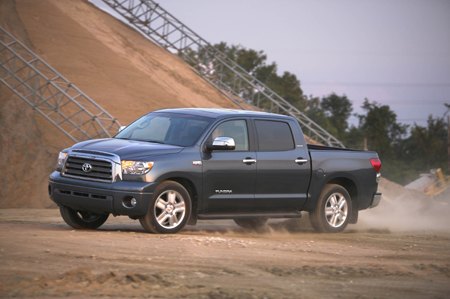





















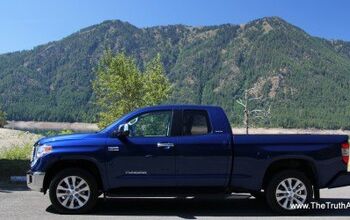
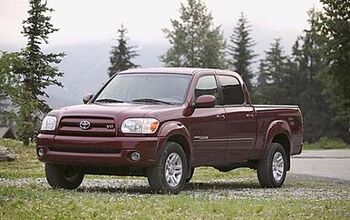
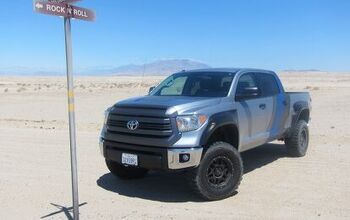
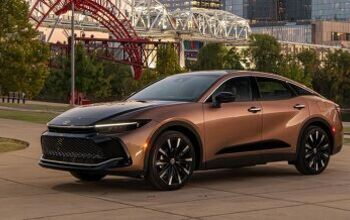










Comments
Join the conversation
Now Consumers Report will not recommend the four-wheel-drive V-8 version of the Tundra pickup. Stating it is "below average" in quality. Also I heard the Tundra is having problems with their engines and tailgates.
With the 2010's hitting the streets and the recalls stacking up how are these things holding up? The frame rust on the earlier models and accelerator issue to mention a few. Calling it a F-150 redux, some may take offense to that!